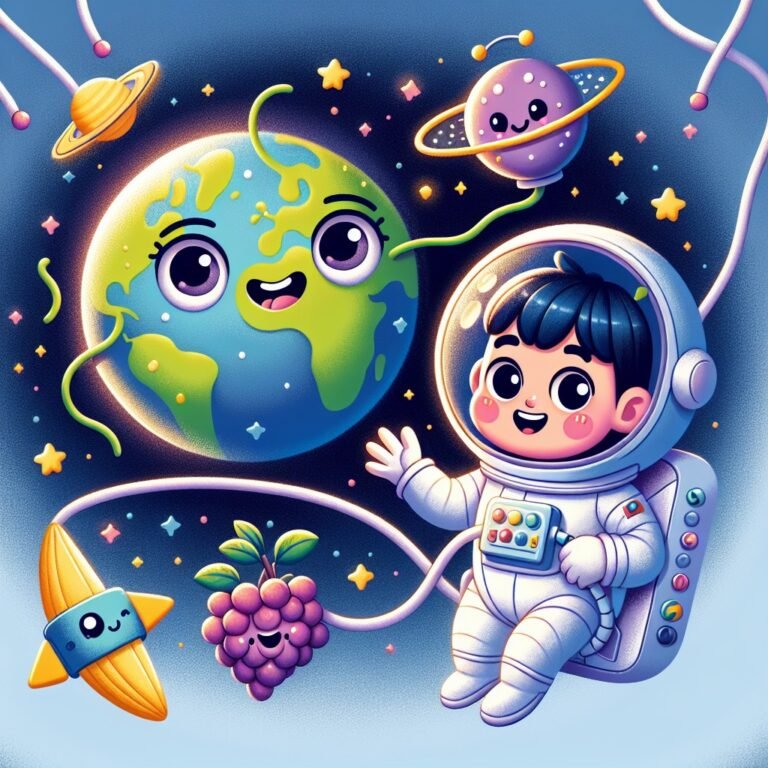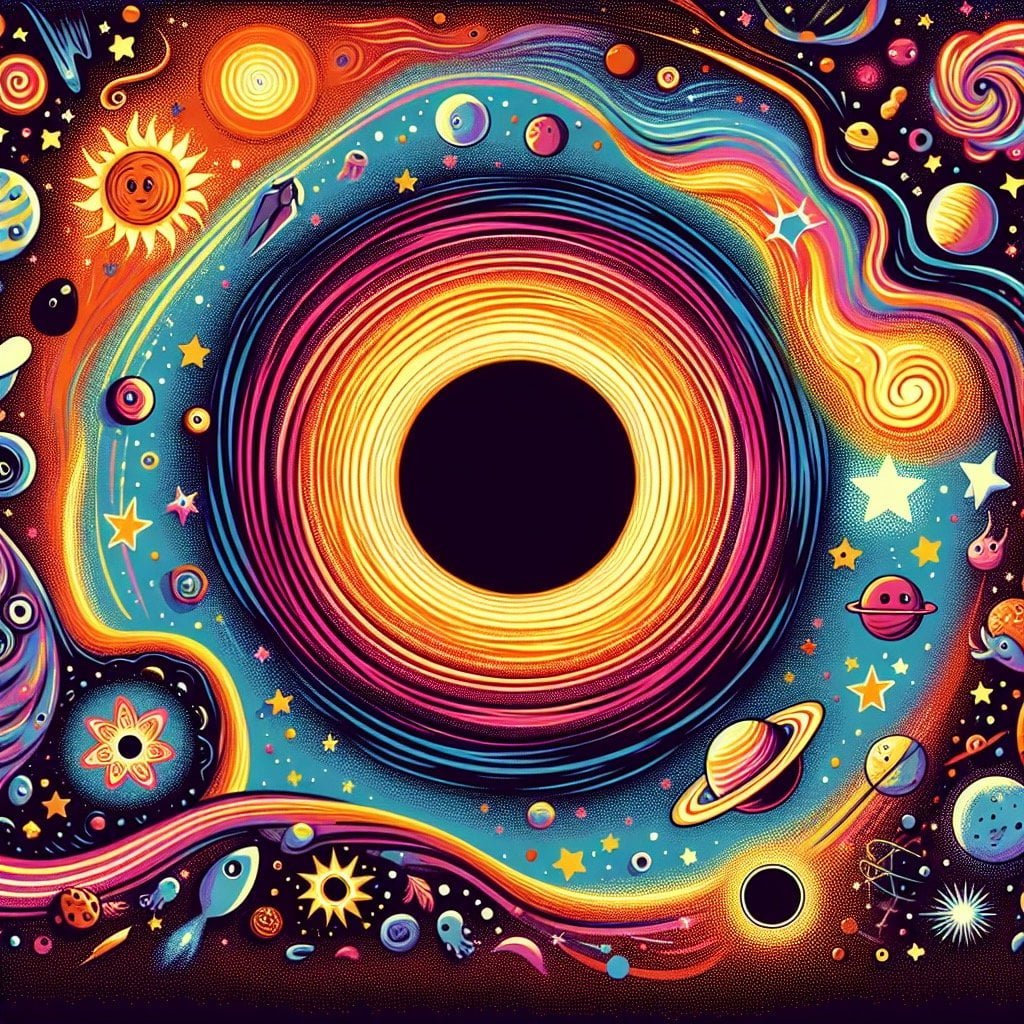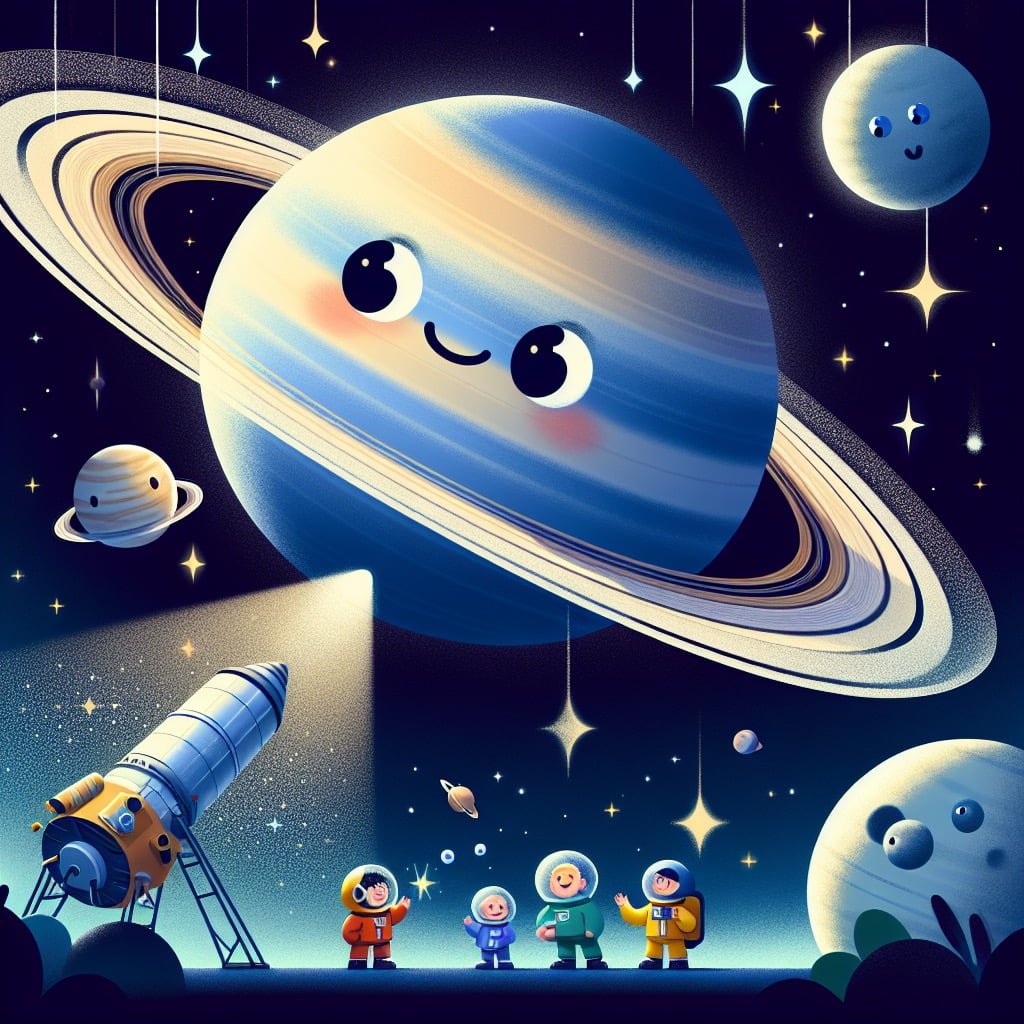Welcome to a fascinating journey through Galaxy Facts For Kids! In this riveting exploration, we will delve into the wonders of our galaxy, the Milky Way, and uncover the captivating secrets of stars, planets, moons, and more. From the massive Sun that lights up our solar system to the intriguing Pluto, no celestial stone will be left unturned as we unravel the mysteries of space for young minds. Each fun fact has been curated to inspire curiosity, ignite wonder, and spark a love for science and exploration in children of all ages. So buckle up and get ready to embark on an interstellar adventure through the cosmos, where the beauty and complexity of our galaxy await discovery at every turn. Get ready to be amazed by Galaxy Facts For Kids!
Galaxy Facts For Kids
1. The Sun is a Huge Star

For younger kids: The Sun is a big ball of fire that keeps us warm and helps plants grow.
For older kids: The Sun is a massive, glowing sphere of gas that provides light, heat, and energy to our solar system. It is classified as a G-type main-sequence star.
Detailed explanation:As a popular science blogger, I am excited to delve into the fascinating realm of galaxy facts for kids, starting with the fact that the Sun is a huge star. The Sun, our very own star at the center of our solar system, is indeed massive compared to other stars in the Milky Way galaxy.
To understand just how huge the Sun is, it’s important to note that it is classified as a G-type main-sequence star, also known as a yellow dwarf. With a diameter of about 1.4 million kilometers, the Sun is so large that approximately 1.3 million Earths could fit inside it. Despite its massive size, however, the Sun is considered an average-sized star in terms of mass compared to other stars in the galaxy.
When we look up at the night sky, we see thousands of stars twinkling in the vast expanse of space. These stars, including the Sun, are just a small fraction of the estimated 100 billion stars that make up the Milky Way galaxy. Each of these stars plays a crucial role in shaping the galaxy and influencing the dynamics of the universe as a whole.
In conclusion, the Sun stands out as a massive star within the Milky Way galaxy, serving as a source of light, heat, and energy for our planet Earth. By exploring galaxy facts for kids, we can develop a greater appreciation for the wonders of the universe and the role that stars like the Sun play in shaping our cosmic environment.
Galaxy Facts For Kids
2. The Milky Way is Our Galaxy
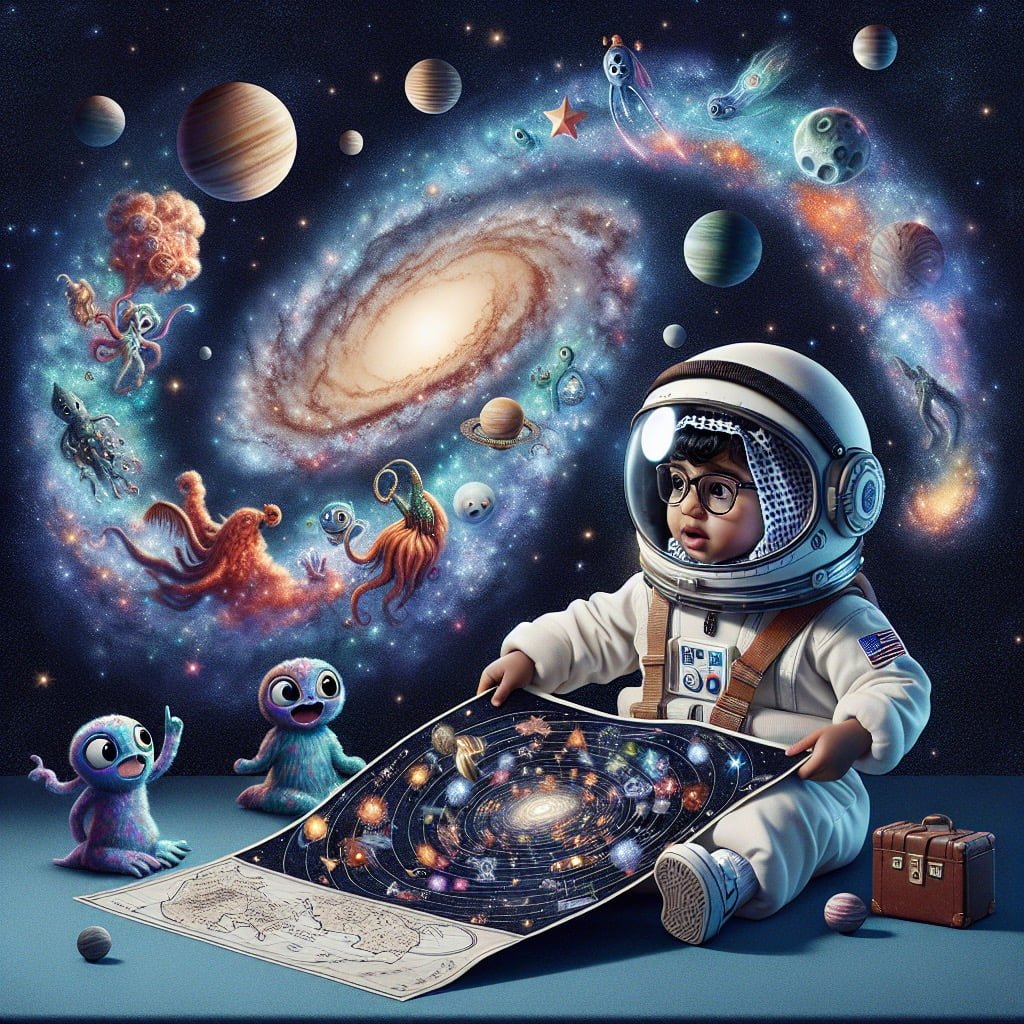
For younger kids: We live in the Milky Way—a huge collection of stars and planets.
For older kids: The Milky Way is a barred spiral galaxy that contains our solar system and billions of other stars, with a diameter of about 100,000 light-years.
Detailed explanation:Galaxy Facts For Kids – The Milky Way is Our Galaxy
The Milky Way is our galaxy, a vast collection of stars, planets, gas, and dust all held together by gravity. It is a spiral galaxy, meaning it has a flat, rotating disk with spiral arms extending outwards from a central bulge. Our solar system is located in one of the spiral arms, about two-thirds of the way out from the center.
One of the most interesting aspects of the Milky Way is its size. It is estimated to be about 100,000 light-years in diameter, meaning it would take light 100,000 years to travel from one end to the other. In addition to its vast size, the Milky Way is thought to contain hundreds of billions of stars, as well as countless planets, asteroids, and other celestial objects.
Galaxy Facts For Kids – Within the Milky Way, there are also smaller structures known as star clusters and nebulae. Star clusters are groups of stars that are gravitationally bound together, while nebulae are clouds of gas and dust where new stars are forming. These structures add to the beauty and complexity of our galaxy.
Despite the fact that the Milky Way is our home galaxy, it can be difficult to study and understand due to its size and our position within it. However, astronomers have made great strides in recent years in mapping the Milky Way and learning more about its structure and composition. As we continue to explore and study our galaxy, new discoveries are sure to be made, further enriching our understanding of the vast and fascinating place we call home.
Galaxy Facts For Kids
3. Black Holes Can Suck Everything In
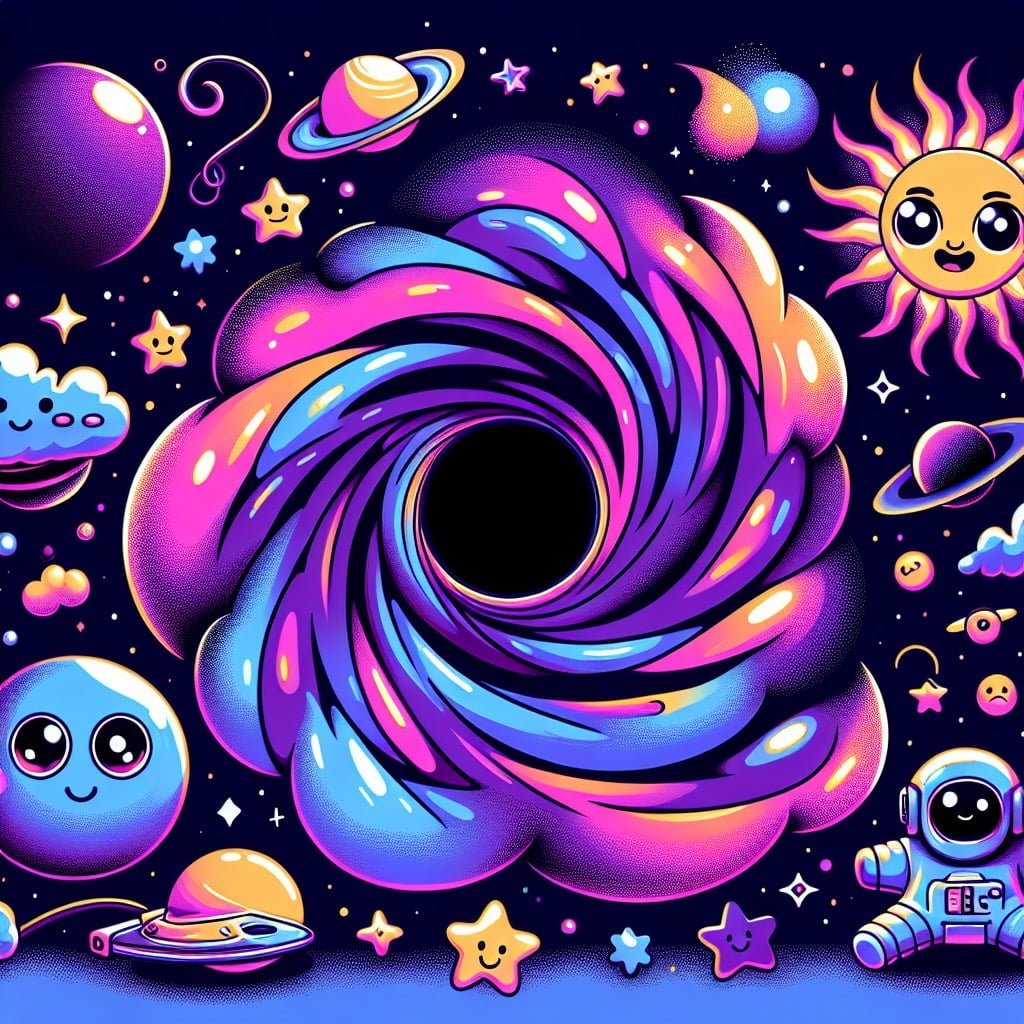
For younger kids: Black holes are like space vacuum cleaners—they can swallow everything around them!
For older kids: Black holes are regions in space where the gravitational pull is so strong that nothing, not even light, can escape from them. They form when massive stars collapse at the end of their life cycle.
Detailed explanation:Black holes are one of the most fascinating yet enigmatic phenomena in the universe. These cosmic entities are regions in space where gravity is so strong that nothing, not even light, can escape from them. This means that if an object, such as a star or planet, gets too close to a black hole, it will be pulled in and consumed by the immense gravitational forces at play.
One of the most captivating aspects of black holes is their ability to “suck in” everything around them. This includes not only matter but also light and even space-time itself. The gravitational pull of a black hole is so intense that it distorts the fabric of space-time, creating a point of no return known as the event horizon. Once an object crosses this boundary, it is inevitably drawn towards the singularity at the center of the black hole, where all known laws of physics break down.
In the context of galaxies, black holes play a crucial role in shaping the evolution and dynamics of these vast cosmic structures. Supermassive black holes can be found at the centers of most galaxies, including our own Milky Way. These black holes have the potential to influence the movement of stars and other celestial bodies within their host galaxies, and can even play a role in the formation of new stars.
In conclusion, the concept of black holes “sucking in” everything around them is a testament to the astonishing power of gravity in the universe. Understanding the behavior of black holes is not only important for advancing our knowledge of astrophysics, but also for inspiring wonder and curiosity in both children and adults alike. So, next time you look up at the night sky, remember the incredible galaxy facts for kids, and marvel at the mysteries of black holes.
Galaxy Facts For Kids
4. Jupiter has Giant Storms
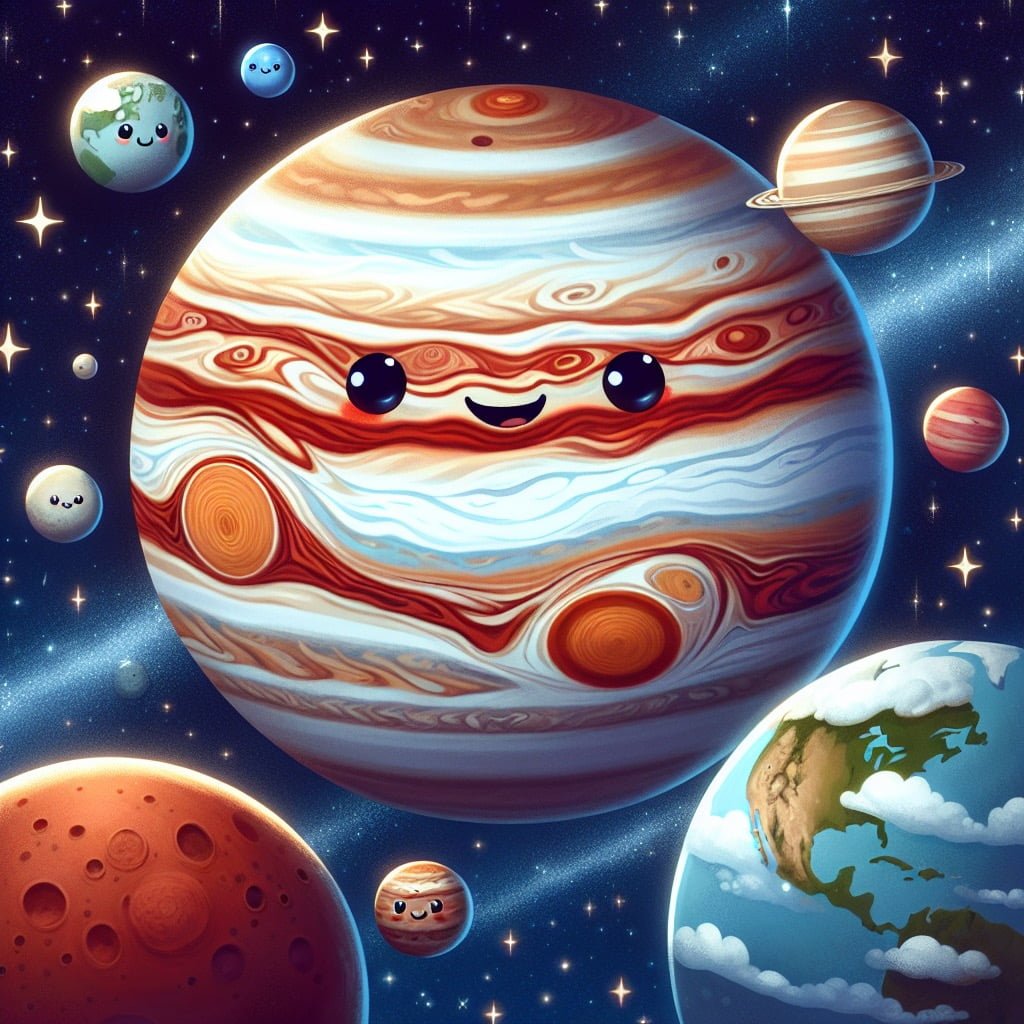
For younger kids: Jupiter is the biggest planet and has really big storms!
For older kids: Jupiter, the largest planet in our solar system, is known for its massive, persistent storms, with the most famous one being the Great Red Spot, which has been raging for at least 400 years.
Detailed explanation:Jupiter, the largest planet in our solar system, is known for its giant storms, including the famous Great Red Spot. This massive storm has been raging for centuries and is so large that it could engulf three Earth-sized planets. But what causes these storms on Jupiter?
One of the main factors contributing to Jupiter’s intense storms is its rapid rotation. Jupiter spins faster than any other planet in our solar system, completing a full rotation in just under 10 hours. This fast rotation creates powerful jet streams in the planet’s atmosphere, driving the formation of storm systems. Additionally, Jupiter’s thick atmosphere, composed mainly of hydrogen and helium, provides the ideal conditions for these storms to develop and persist.
Another key factor in Jupiter’s stormy weather is its immense size. Being a gas giant, Jupiter has no solid surface, allowing its storms to form and evolve freely in the planet’s atmosphere. These storms can grow to enormous sizes, with some spanning thousands of kilometers across.
The study of Jupiter’s storms not only provides valuable insights into the planet’s atmospheric dynamics but also offers a fascinating glimpse into the extreme weather phenomena that can occur in our own solar system. By studying Jupiter’s storms, scientists can better understand the complex processes at play in other planets and even in galaxies beyond our own.
In conclusion, Jupiter’s giant storms are a mesmerizing feature of this gas giant, showcasing the raw power and beauty of the planet’s atmospheric dynamics. Through ongoing research and exploration, we continue to uncover new insights into these awe-inspiring phenomena. Galaxy Facts For Kids are indeed fascinating to learn about, as they offer a window into the wonders of the universe.
Galaxy Facts For Kids
5. Venus is the Hottest Planet

For younger kids: Venus is super hot because it’s covered in clouds that trap heat.
For older kids: Venus has a thick atmosphere that creates a runaway greenhouse effect, making it the hottest planet in our solar system. Surface temperatures can reach about 900 degrees Fahrenheit (475 degrees Celsius).
Detailed explanation:Venus, often referred to as Earth’s “sister planet” due to their similar size and composition, is actually the hottest planet in our solar system. This may come as a surprise to some, considering that Mercury is the closest planet to the sun. However, Venus’s extreme heat can be attributed to its thick atmosphere, which is composed mainly of carbon dioxide and clouds of sulfuric acid.
The greenhouse effect on Venus is incredibly intense, trapping heat and causing temperatures to soar to over 800 degrees Fahrenheit (427 degrees Celsius). This makes Venus hotter than even Mercury, despite the fact that it is further from the sun.
One interesting aspect of Venus’s extreme heat is that it has led to a phenomenon known as “runaway greenhouse effect.” This means that as the planet continues to heat up, more carbon dioxide is released into the atmosphere, which in turn traps even more heat. This creates a vicious cycle, further increasing temperatures on the planet.
Understanding the extreme temperatures on Venus can provide valuable insights into the study of planetary atmospheres and climate systems. It also serves as a reminder of the diverse and fascinating characteristics of the planets within our solar system. While Venus may be the hottest planet in our solar system, there are many other intriguing facts to be discovered about the planets, moons, and other celestial bodies within our Galaxy Facts For Kids.
Galaxy Facts For Kids
6. The Moon is Not a Planet

For younger kids: The Moon is a big rock that orbits Earth, not a planet like Jupiter or Mars.
For older kids: The Moon, Earth’s natural satellite, is classified as a moon, not a planet. It’s about one-quarter the size of Earth and plays a crucial role in stabilizing our planet’s rotation.
Detailed explanation:Many people often mistakenly refer to the Moon as a planet, but in reality, it is not a planet at all. The Moon is actually Earth’s only natural satellite, meaning that it orbits around our planet rather than around the Sun like a planet. The Moon is much smaller in size compared to planets like Earth, Mars, or Jupiter, and it does not have its own atmosphere or any significant gravitational pull.
One of the most fascinating Galaxies Facts For Kids about the Moon is that its surface is covered in various formations such as craters, mountains, and valleys, which were created by impacts from asteroids and comets over billions of years. The lack of atmosphere on the Moon means that there is no weathering or erosion to smooth out these features, leading to a rugged and cratered landscape.
Another interesting fact about the Moon is that it goes through different phases as it orbits around Earth. These phases are caused by the position of the Moon in relation to the Sun and Earth, and they can be observed from Earth as the Moon waxes and wanes from a full moon to a new moon and back again.
Overall, while the Moon may not be a planet, it plays a crucial role in Earth’s system by influencing tides, stabilizing our planet’s axis, and even providing a source of inspiration and wonder for people of all ages. So next time you gaze up at the night sky, remember that the Moon is not a planet, but a fascinating and beautiful satellite of Earth.
Galaxy Facts For Kids
7. Mars Has Rusty Soil

For younger kids: Mars has red dirt because it’s rusty, just like old metal!
For older kids: The reddish appearance of Mars is due to iron oxide, or rust, on its surface. This gives the planet its distinctive color and has earned it the nickname “Red Planet.”
Detailed explanation:One of the fascinating facts about Mars is that it has rusty soil. The reddish hue of the Martian soil is due to high levels of iron oxide, also known as rust. This phenomenon gives the surface of Mars its distinctive appearance and has led to the planet often being referred to as the “Red Planet.”
The presence of iron oxide in the soil is not only visually striking but also provides important clues about the planet’s geological history. Scientists believe that Mars was once a warmer and wetter planet, with liquid water flowing on its surface. The iron in the soil would have interacted with this water, leading to the formation of iron oxide.
Studying the composition of the soil on Mars can provide valuable insights into the planet’s past climate and environmental conditions. By analyzing the rust-colored soil, scientists can learn more about the history of water on Mars and the processes that have shaped the planet over time.
In addition to its scientific significance, the rusty soil of Mars captures the imagination of people of all ages, including kids who are curious about the mysteries of the universe. Learning about the rusty soil on Mars is just one of the many intriguing Galaxy Facts For Kids that can spark an interest in space exploration and encourage a deeper understanding of the world beyond our own planet.
In conclusion, the rusty soil on Mars is a captivating feature that not only adds to the planet’s unique beauty but also offers valuable scientific insights into its history and evolution.
Galaxy Facts For Kids
8. Neptune Has Strong Winds

For younger kids: Neptune is very windy—it has the strongest winds in the solar system!
For older kids: Neptune, the eighth planet from the Sun, has incredibly strong and supersonic winds that can reach speeds of up to 1,500 miles per hour (2,400 kilometers per hour) in its atmosphere.
Detailed explanation:Neptune, the eighth and farthest planet in our solar system, is known for its incredibly strong winds. These winds can reach speeds of up to 1,500 miles per hour, making them some of the fastest in the solar system. The reason for these intense winds lies in Neptune’s unique atmosphere.
Neptune’s atmosphere is composed mostly of hydrogen, helium, and methane, with trace amounts of other gases. The planet’s distance from the Sun means that it receives very little sunlight, causing its atmosphere to be extremely cold. Despite the frigid temperatures, the presence of methane in the atmosphere plays a key role in driving the planet’s winds.
Methane absorbs red light from the Sun, which heats up the surrounding atmosphere and causes it to flow in different directions. This process, known as radiative forcing, creates the powerful winds that are seen on Neptune. Additionally, the planet’s rapid rotation further enhances the strength of these winds, as it creates a Coriolis effect that deflects the air currents.
These strong winds on Neptune are a fascinating example of the complex interactions that occur within a planet’s atmosphere. By studying the dynamics of Neptune’s winds, scientists can gain valuable insights into the behavior of atmospheres on other planets within our own solar system and beyond. For example, by comparing Neptune’s winds to those on exoplanets in distant galaxies, researchers can better understand the factors that influence atmospheric circulation in different planetary systems.
In conclusion, Neptune’s strong winds are a remarkable phenomenon that showcases the intricate processes at work in our solar system and provides valuable Galaxy Facts For Kids to the scientific community.
Galaxy Facts For Kids
9. Saturn Has Amazing Rings

For younger kids: Saturn wears a beautiful belt of sparkly rings made of ice and rock!
For older kids: Saturn’s stunning rings are composed of ice, dust, and rock particles. They vary in size and shape, and their origin is still a subject of scientific research and exploration.
Detailed explanation:Saturn, one of the most fascinating planets in our solar system, is known for its incredible rings. These rings are made up of billions of small particles, ranging in size from tiny grains of dust to large boulders. The rings are primarily composed of ice particles, with some rocky material mixed in.
One of the most interesting things about Saturn’s rings is their sheer size. While they may appear solid from a distance, they are actually made up of countless individual particles that orbit the planet in a very thin plane. In fact, the rings extend up to 175,000 miles from the planet, but are only about 30 feet thick. This makes them incredibly wide, yet incredibly thin at the same time.
Another fascinating aspect of Saturn’s rings is their origin. While scientists are still not entirely sure how the rings formed, one popular theory is that they are the remnants of a moon or comet that was torn apart by Saturn’s gravity. These particles then formed into the disk-like structures we see today.
Saturn’s rings are not only visually stunning, but they also provide valuable information about the planet itself. By studying the rings, scientists can learn more about Saturn’s composition, structure, and history. They can also gain insights into how planets and moons form in other parts of our galaxy.
In conclusion, Saturn’s rings are truly amazing and offer a wealth of information about the planet and the wider galaxy. Their unique characteristics and mysterious origins make them a focus of study for astronomers and researchers around the world. Galaxy Facts For Kids are not only fascinating to learn about, but also provide valuable insights into the workings of our universe.
Galaxy Facts For Kids
10. Pluto is No Longer a Planet

For younger kids: Pluto was once called the ninth planet, but now it’s not a planet anymore.
For older kids: In 2006, the International Astronomical Union reclassified Pluto as a “dwarf planet” due to its size and the characteristics of its orbit. However, it remains a fascinating world of study for astronomers.
Detailed explanation:Pluto’s demotion from being classified as a planet was a controversial decision that took place in 2006. The International Astronomical Union (IAU) made the decision to reclassify Pluto as a “dwarf planet” due to its size, orbit, and characteristics that set it apart from the traditional eight planets in our solar system. This decision sparked debates among astronomers, educators, and the general public, as many people had grown up learning that Pluto was the ninth planet in our solar system.
One of the main reasons that led to Pluto’s reclassification was its size. While the eight traditional planets in our solar system are significantly larger and dominate their orbits, Pluto is much smaller and shares its orbit with other objects in the Kuiper Belt. The Kuiper Belt is a region of the solar system beyond Neptune that is populated by small icy bodies, including other dwarf planets like Eris and Haumea. This shared orbit and size difference were key factors in the IAU’s decision to reclassify Pluto.
Despite no longer being considered a planet, Pluto remains a fascinating and important object in our solar system. Its unique characteristics, such as its moon Charon and its thin atmosphere, continue to captivate scientists and the public alike. By studying Pluto and other dwarf planets in our solar system, we can learn more about the formation and evolution of our planetary system.
In conclusion, while Pluto may no longer be classified as a planet, it continues to be a significant and intriguing object in our solar system. Understanding the reasons behind its reclassification can help us appreciate the diversity and complexity of the worlds that make up our galaxy. For more interesting Galaxy Facts For Kids, keep exploring the wonders of our cosmic neighborhood.
Did You Know?
Space is not completely empty—there’s a lot of stuff out there! From stars and planets to galaxies and mysterious dark matter, the universe is full of wonders waiting to be explored.
Summary of Galaxy Facts For Kids
Are you looking for a way to spark curiosity and wonder in young minds? Exploring fun galaxy facts for kids is a fantastic way to introduce children to the wonders of the cosmos and inspire a love for space and science. From learning about the formation of stars and planets to discovering the different types of galaxies that exist in the universe, there is so much to explore and discover about our own Milky Way.
By delving into these fascinating facts, kids can develop a deeper appreciation for the beauty and complexity of the universe. Not only will they gain valuable knowledge about our galaxy, but they will also cultivate critical thinking skills and a sense of wonder that will serve them well throughout their lives. Encouraging children to explore and ask questions about the world around them will help foster a lifelong love for science and exploration.
So, why not dive into the world of galaxy facts for kids and ignite a passion for learning about the mysteries of the cosmos? By encouraging young ones to keep gazing at the stars and dreaming of distant worlds, we can help them uncover the vast and mysterious wonders of the universe.
Sources and additional information for Galaxy Facts For Kids
WikipediaBritannicaNASAEuropean Space Agency (ESA)Space.comAstrophysical JournalSky & TelescopeUniverse TodaySpaceXThe Planetary SocietyAstronomy MagazineHubbleSiteNational Geographic KidsNASANational Air and Space MuseumESA KidsSpace.comThe Planetary SocietyNational Radio Astronomy Observatory (NRAO)Hayden PlanetariumSky & Telescope
